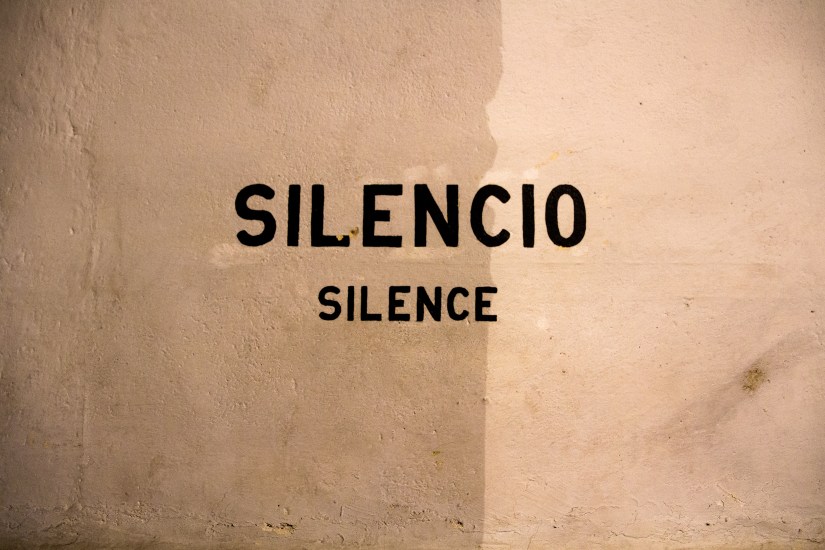Knowing the alphabet is essential to learn and improve any language from a practical point of view, and also to memorize its vocabulary.
Therefore, from Españolé we have prepared a list of frequently asked questions or FAQs about the Spanish alphabet and its pronunciation that may be useful if you are going to take one of our intensive Spanish courses in Spain.

How many letters does the Spanish alphabet have?
Currently, our alphabet has 27 letters.
However, until 2009, the number of letters was 29.
Why did this change occur? Perhaps we have removed some letters?
Wrong answer!
What simply happened is that the RAE (Royal Spanish Academy), in their 2010 spelling revision, decided that the forms “ch” and “ll” were no longer independent letters, instead they were the result of a combination of letters that were represented by a single sound known as a “digraph”.
Other Spanish digraphs, besides “ch” and “ll”, are “gu”, “qu” and “rr”, which we will also discuss in this article.
However, this is not the only change that the Spanish alphabet has seen in recent years.
For example, the Y, known until recently as “Greek i”, is now called “ye”.
This term is not exactly new, since it was first mentioned, in an individual and not very well accepted way, in the Spanish Dictionary of 1869, and it seems that little by little it has ended up becoming popular since it respects the pattern followed for most of the consonants in our language.
How do we call the letters of the Spanish alphabet?
In Spanish, all the letters are feminine.
This means that, if you are going to refer to any of them, they must always be preceded by the article “la”.
By understanding the Spanish alphabet and pronunciations, you can improve your accent.
Their names are:
• A, a: a
• B, b: be
• C, c: ce
• D, d: de
• E, e: e
• F, f: efe
• G, g: ge
• H, h: hache
• I, i: i
• J, j: jota
• K, k: ka
• L, l: ele
• M, m: eme
• N, n: ene
• Ñ, ñ: eñe
• O, o: o
• P, p: pe
• Q, q: cu
• R, r: erre
• S, s: ese
• T, t: te
• U, u: u
• V, v: uve
• W, w: uve doble
• X, x: equis
• Y, y: ye
• Z, z: zeta
Ready to speak Spanish like a native? Join a Spanish courses in Spain today!

What are the main problems in pronouncing the Spanish alphabet for foreign students?
The Sounds [θ] and [k] and [x] and [g].
Practicing the Spanish alphabet and pronunciations will help you gain confidence in Spanish conversations.
Although there are some exceptions and there may be some words that are hard to pronounce in Spanish, yet it is a fairly easy language to pronounce: our alphabet has only five vowels, and both its syllables and the combination of phonemes is quite easy to pronounce, especially for English-speaking students.
Even so, it is useful to know the basics of pronouncing the letters correctly in the Spanish alphabet.
For example, Spanish speakers pronounce B and V in the same way, regardless of their position, so in this aspect there is no confusion (at least in the oral part, because when writing it is important to know the rules of using B and V).
Regarding the sounds [θ] and [k] of the letters Ce (C), Zeta (Z) and Cu (Q), they depend on their position within the word.
For example, the letter Ce (C) has two different pronunciations: it sounds [k] (like the English K) when it is followed by A, O or U, or [θ] (like the TH sound of the English verb to think) when it is placed before I and E.
Now, you are probably asking yourself: what about the sounds [ki] and [ke], don’t they exist in Spanish?
Although they are not very common, both [ki] and [ke] are used in our language, but they are not written with the C, but with the letter Q followed by the U (QU) and sounding [k] (like the English K) (que, quién, querer, etc.).
On the other hand, the letter Z is pronounced [θ], but only before the vowels A, O and U.
Another important characteristic of the Spanish alphabet and its pronunciation refers to the sounds [x] and [g] with the letters ge (G) and jota (J).
The pronunciation of the ge (G) and jota (J) are similar, although with a few exceptions.
For example, the jota (J) is always pronounced as [x], while the ge (G) changes its pronunciation depending on its position: before the vowels E and I, it sounds like the pronunciation of the letter jota (J), but followed by the rest of the vowels (i.e., A, O and U) it sounds like [g].
And how can you get the [g] sound with the E and I?
By using one of the digraphs we talked about earlier.
Specifically, the form “gu”, which you can see in all words containing the combination GUE or GUI (war or guitar, for example).
Discover → Learn the difference between if and else: Easy examples
The double ele (LL) and the double erre (RR) and their pronunciation
Another big curiosity about the Spanish alphabet is how to compose the sound [y].
The letter Ye (Y) has the special characteristic of being used as a vowel or as a consonant: it is a vowel when it appears without other vowels or at the end of a word (tú y yo, rey, etc.) and as a consonant in all other positions (yo, yate, etc.).
Regarding the double ele (LL), its sound is the same as the consonant ye (llave, llevar, lluvia, etc.).
We conclude this review about the main characteristics of the Spanish alphabet with the sounds [r] and [rr], corresponding to the letter erre (R) and the double digraph erre (RR).
The letter erre (R) can sound soft or deep: it sounds soft when it is placed between vowels, before or after consonants (other than S, L, N) and at the end of words, while it is pronounced strong when it is at the beginning of a word or after the consonants S, L, N.
Regarding double erre (RR), it is always pronounced low and is always placed between two vowels.
Tips to master the Spanish alphabet and pronunciations
Listen to native speakers
- Watch Spanish videos, listen to podcasts, or follow Spanish-speaking YouTubers to hear the correct pronunciation.
Practice with a mirror
- Observe the movement of your mouth when pronouncing letters, especially tricky ones like “R” and “J”.
Break words into syllables
- Pronounce each syllable separately before saying the full word to improve clarity.
Use phonetic associations
- Relate Spanish sounds to similar English sounds (e.g., “LL” in Spanish sounds like the English “Y” in “yes” in most dialects).
Repeat difficult sounds daily
- Focus on tricky letters like “RR”, “J”, “Ñ” and “G”. Practice with tongue twisters!
Record yourself speaking
- Compare your pronunciation with native speakers and correct mistakes.
Use language Apps
- Apps like Duolingo, Rosetta Stone, or Forvo can help with pronunciation and listening exercises.
Speak out loud every day
- Even if you’re alone, practice saying words and sentences aloud to improve fluency.
Learn the difference between accents
- The same letter may sound different in Spain vs. Latin America. Understanding these variations helps with comprehension.
Ask native speakers for feedback
- If possible, practice with a Spanish-speaking friend or tutor who can correct your pronunciation.
Do you want to improve your Spanish pronunciation?
At Españolé we offer Spanish courses in Spain, and we help you prepare for the official exams of the Cervantes Institute, DELE and SIELE.
We address the process of learning Spanish from a global perspective, since our goal is for students to learn how to speak in Spanish with the greatest independence and freedom, from the very first moment.
Ask us for information free of commitment!
